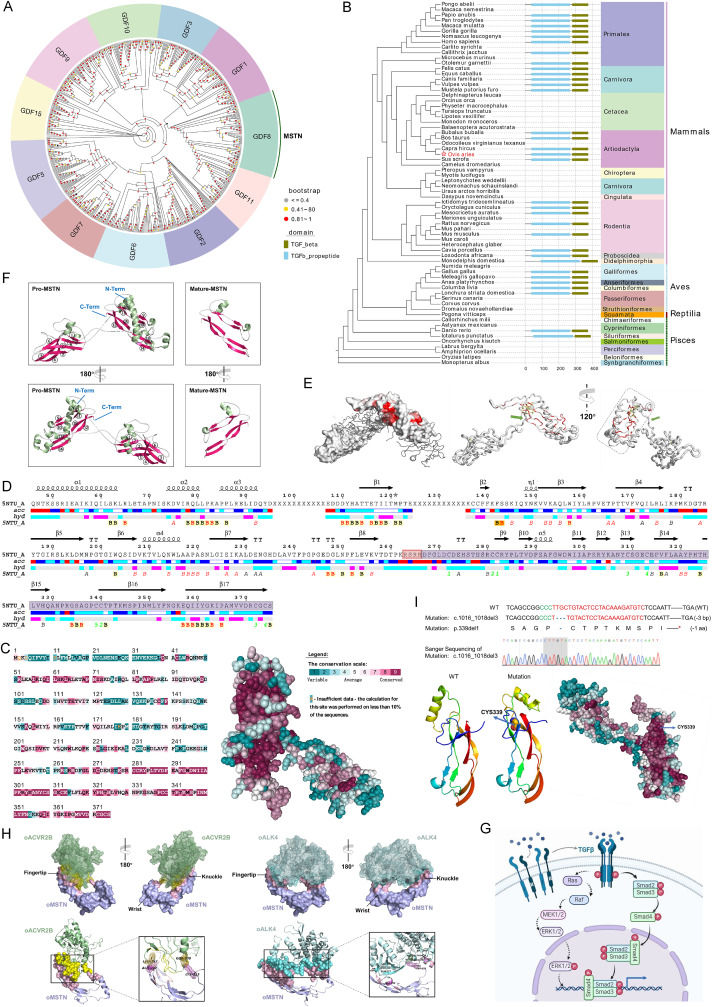
Evolutionary characteristics, biochemical structure, and function impact of MSTN gene


The myostatin (MSTN) gene, also known as growth and differentiation factor 8 (GDF8), plays a critical role in regulating muscle mass in animals by negatively controlling the number and size of skeletal myocytes. MSTN mutations have been demonstrated to cause the double-muscling (DBM) phenomenon in various species, including cattle, sheep, mice, pigs, dogs, rabbits, and even humans.1 In this study, we explored the evolutionary characteristics, biochemical structure and function impacts of the sheep MSTN gene (oMSTN) using phylogenetic analysis, mutation effect evaluation, residue conservation studies, structural modeling, and protein–protein docking. Our findings suggest that the evolutionary characteristics and biochemical structural features of oMSTN are closely tied to its functional and clinical roles in regulating skeletal muscle growth. We validated our hypothesis by creating MSTN gene-edited sheep using CRISPR/Cas9 technology. These results provide valuable insights for the preparation of animal models and the rapid and effective improvement of meat production. Furthermore, evaluating the effects of MSTN inhibition in animal models with diverse human diseases could support the development of MSTN inhibitors for future clinical applications.
